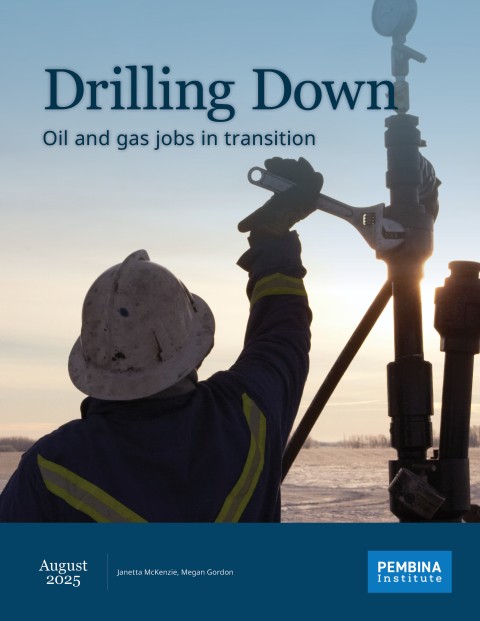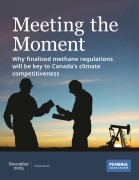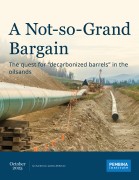For many years, Canada’s oil and natural gas resources have been leveraged to provide thousands of jobs, billions of dollars of economic output, and well-paid work for generations of employees, especially in provinces such as Alberta, British Columbia, and Saskatchewan. As a result, the sector is still often assumed to be an engine of abundant employment opportunities and economic growth potential.
However, as this report will outline, this perception of the sector — especially with regards to how the economic benefits of oil and gas production are experienced by workers and communities — is now likely to be outdated.
Our analysis finds that employment levels in Canada’s oil and gas sector never recovered from the global oil price crash of 2014 — a seismic event that fundamentally changed companies’ and investors’ appetite for risk. This has led to a lack of major new oil and gas project investment over the past decade, with companies instead opting to bolster their market positions through mergers, acquisitions, consolidation of workforces, and the automation of some roles.
Employment figures demonstrate the impact that this has had on workers. Where once the level of employment in the sector was characterised by periods of ‘boom’ and ‘bust’, depending on fluctuations in the global oil price, after 2012 jobs became decoupled from profits and production levels. Employment in the sector peaked in 2012, at 38 jobs per thousand barrels of oil per day produced. By 2023, it was at 22 jobs per thousand barrels — a 43% decrease, despite the fact that oil and gas production grew 47% during the same period.
Given the pace of the international energy transition, not only do we expect this trend to continue, we expect it to be exacerbated in the years ahead. In the next decade, as Canada’s oil and gas industry faces a global market in which demand for its products is plateauing and beginning to fall, the sector is likely to be smaller overall, and the companies that remain will double down on these cost-cutting behaviours. Governments — especially those with significant oil and gas production in their jurisdiction — have a responsibility to acknowledge this new reality and prepare workers for it.
This report also examines the employment opportunities associated with the decarbonization of Canada’s oil and gas production, including potential growth industries such as methane abatement and carbon capture and storage, both of which require skills that overlap with traditional oil and gas jobs. However, these decarbonization jobs will only materialize if governments take rapid steps to regulate the emissions that come from oil and gas production, so that companies are sufficiently incentivized to make investments in emissions-reducing projects. Not only would such regulation create jobs, it would help futureproof Canada’s oil and gas sector to retain market access in a world that is increasingly prioritizing low-carbon energy imports, such as through emerging carbon-based import duties and requirements.
However, more promising is the employment potential associated with other natural resource sectors such as renewable energy, as well as those that are expected to underpin key parts of the global energy transition, like electric vehicles and low-carbon manufacturing. In Alberta alone, our modelling indicates that the right policies and support for workers could result in tens of thousands of clean economy jobs added by 2030, reaching hundreds of thousands by 2050 — far outstripping jobs lost from the oil and gas sector.
Crucially, as leaders across Canada search for every opportunity to bolster our economic resilience — including which large projects should be fast-tracked through government approval processes — it is important to be clear-eyed about these larger, longer-term trends at play in the oil and gas industry. The findings of this report should inform policymakers about which types of investment in Canada are most likely to provide long-term benefits to workers and communities.
Rather than doubling down on new oil and gas infrastructure or projects that would, at best, only create a relatively small number of short-term jobs, governments must instead align workforce development with planning for changing energy industries. In doing so, they can ensure that workers are set up for success in the growing low-carbon economy. By facing this head-on, governments can protect workers now and in the future, deliver good jobs, and continue to build prosperity for Canada’s communities.









